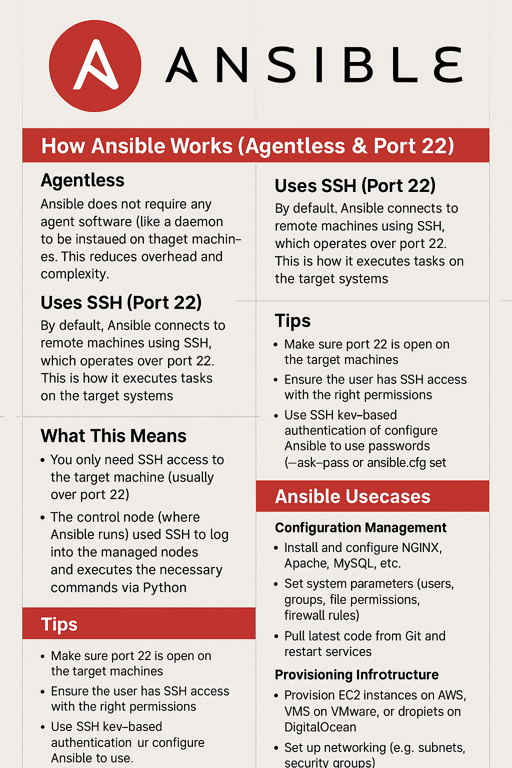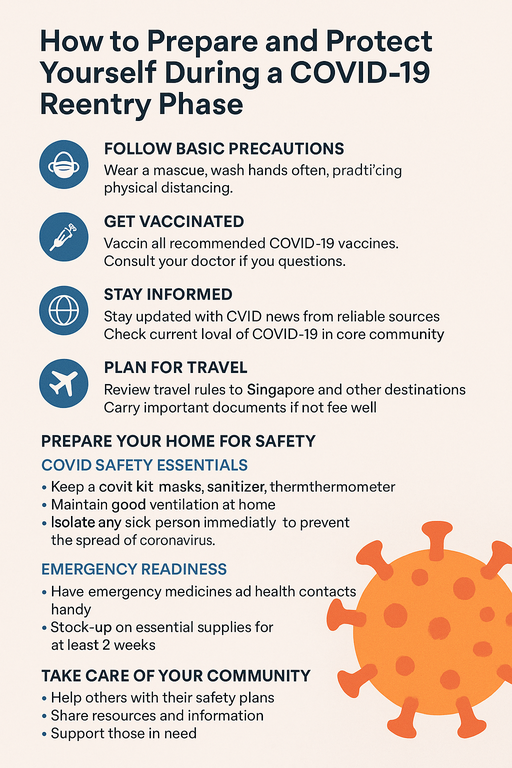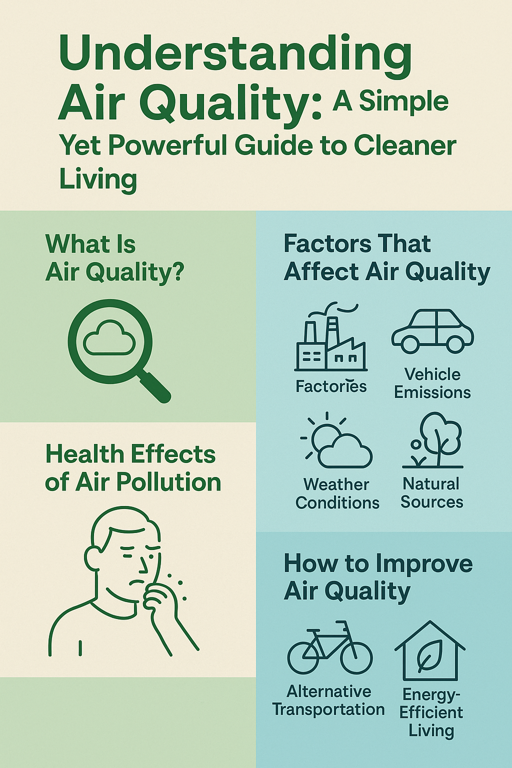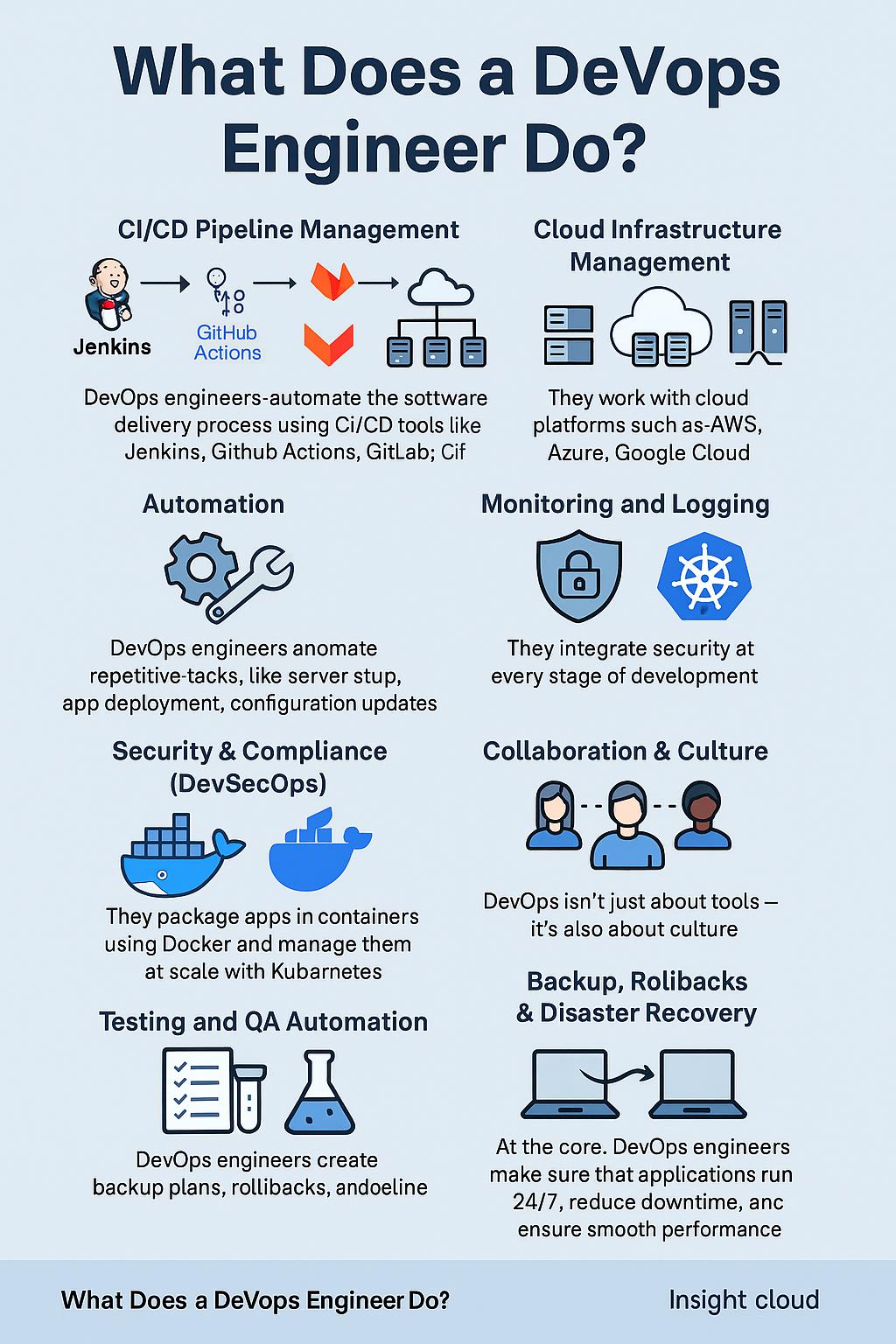Wondering what Ansible is and how it works? Ansible is one of the most powerful open-source automation tools for DevOps. It uses an agentless architecture and SSH to automate IT tasks like configuration management, app deployment, and server orchestration

In this blog, you’ll learn:
- How Ansible works (agentless architecture using SSH)
- Real-world use cases of Ansible
- Minimal setup to get started with Ansible
- Why Ansible is ideal for DevOps, SysAdmins, and Cloud Engineers
How Ansible Works (Agentless Architecture)
Agentless by Design
One of Ansible’s biggest strengths is that it’s agentless. This means:
- No need to install any additional software or agent on managed (remote) machines.
- Less system overhead and fewer vulnerabilities.
- Easy to manage existing environments without disruption.
Uses SSH (Port 22)
Ansible uses SSH (Secure Shell) to connect to managed nodes. Here’s what it means:
- SSH runs over port 22 — ensure it’s open on all target machines.
- It logs into machines using a user account and runs tasks using Python (which must be pre-installed).
- You only need SSH access + Python — that’s it!
Key Things You Need to Use Ansible
- SSH access to managed nodes (port 22 open)
- Python installed on remote systems (usually pre-installed on Linux)
- Control node (where you install and run Ansible)
- SSH key-based authentication (recommended) or password-based access
Tips:
- Use SSH keys for passwordless access
- Use
--ask-passif you’re using password-based login - Manage credentials securely via
ansible.cfgorvault
Top 8 Real-World Ansible Use Cases
Ansible can be used across many domains. Here are the most common and powerful use cases:
1. ⚙️ Configuration Management
Automate system configurations and ensure consistency across servers.
Examples:
- Install and configure NGINX, Apache, MySQL
- Set up users, groups, firewall rules, and system settings
- Push config files like
/etc/nginx/nginx.confto all servers
2. Application Deployment
Streamline and standardize your application deployments.
Examples:
- Deploy apps (Django, Node.js, Java, etc.) with all dependencies
- Pull latest code from Git and restart services
- Perform rolling updates with zero downtime
3. Infrastructure Provisioning
Provision virtual machines, servers, and networks using cloud provider APIs.
Examples:
- Create EC2 instances on AWS or VMs on VMware
- Configure subnets, firewalls, and security groups
- Combine with Terraform for hybrid cloud automation
4. Orchestration
Coordinate complex multi-step deployments and infrastructure changes.
Examples:
- Deploy multi-tier apps (web + app + DB layers)
- Manage microservices and containers in sequence
- Sync updates across load-balanced nodes
5. Security & Compliance Automation
Automate security best practices and enforce compliance standards.
Examples:
- Enforce strong password policies and disable inactive accounts
- Auto-install security patches on a schedule
6. Container & Kubernetes Management
Manage containerized environments and Kubernetes clusters easily.
Examples:
- Build Docker images and manage containers
- Use Ansible’s Kubernetes modules (
k8s) to manage pods, deployments, and more - Deploy Helm charts or CNI plugins with Ansible
7. CI/CD Pipeline Integration
Use Ansible in your GitOps or DevOps workflows.
Examples:
- Deploy code automatically after a Git push
- Run tests and infrastructure validation
- Roll back deployments on failure using playbooks
8. Desktop & Workstation Automation (Bonus Use Case)
Automate the setup of personal or developer machines.
Examples:
- Install dev tools, SDKs, and packages
- Set up dotfiles, IDEs, aliases, and themes
- Configure environments for remote development
Minimal Setup: Ansible Control & Managed Nodes
Here’s what you need to run Ansible in a lightweight testing or production environment:
| Machine | CPU | RAM | Disk | OS |
|---|---|---|---|---|
| Control Node | 1 | 1 GB | 10 GB | Ubuntu |
| Managed Node 1 | 1 | 512 MB | 10 GB | Ubuntu |
| Managed Node 2 | 1 | 512 MB | 10 GB | Ubuntu |
You can set this up locally using VirtualBox, VMware, or any cloud VM provider like AWS, Azure, or DigitalOcean.
Control Node Requirements:
- Ansible installed via
apt,yum, orpip - Python 3.x
- SSH keys set up for remote access
Final Thoughts: Why Ansible?
Ansible is perfect for:
- Beginners learning automation
- DevOps professionals managing complex systems
- Teams adopting Infrastructure as Code (IaC)
- Businesses looking for scalable, repeatable deployments
Why You’ll Love It:
- Simple YAML playbooks
- Secure agentless design
- Fast deployments over SSH
- Extensible with Ansible Galaxy roles & custom modules
Start Learning Ansible Today!
Here are a few ways to get started:
- Install Ansible on your local Linux VM
- Try your first playbook
- Explore Ansible Galaxy for prebuilt roles
Want a beginner Ansible tutorial series? Drop a comment or reach out!








